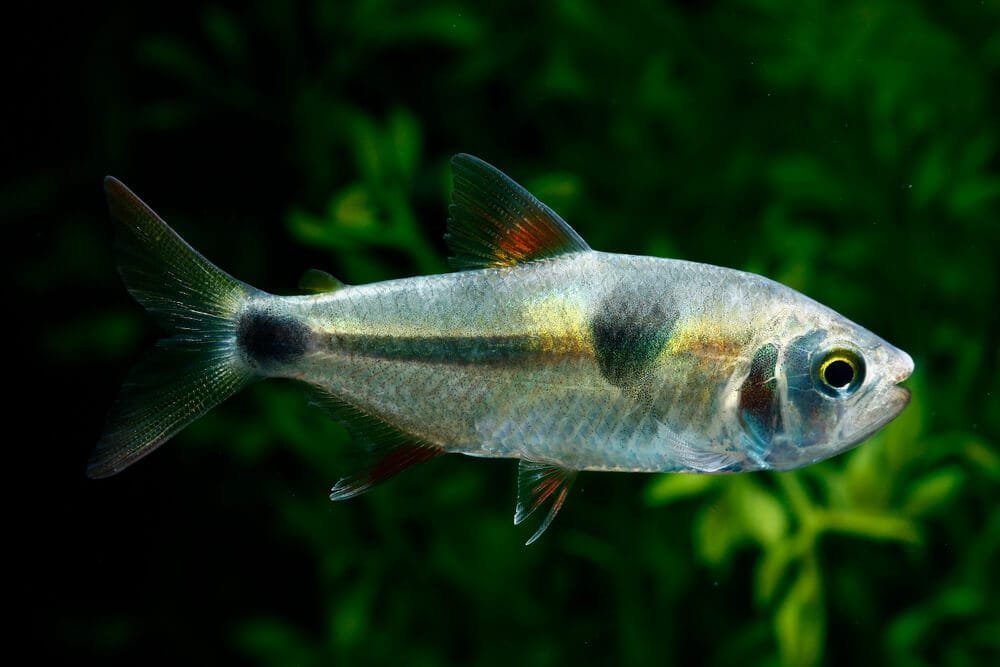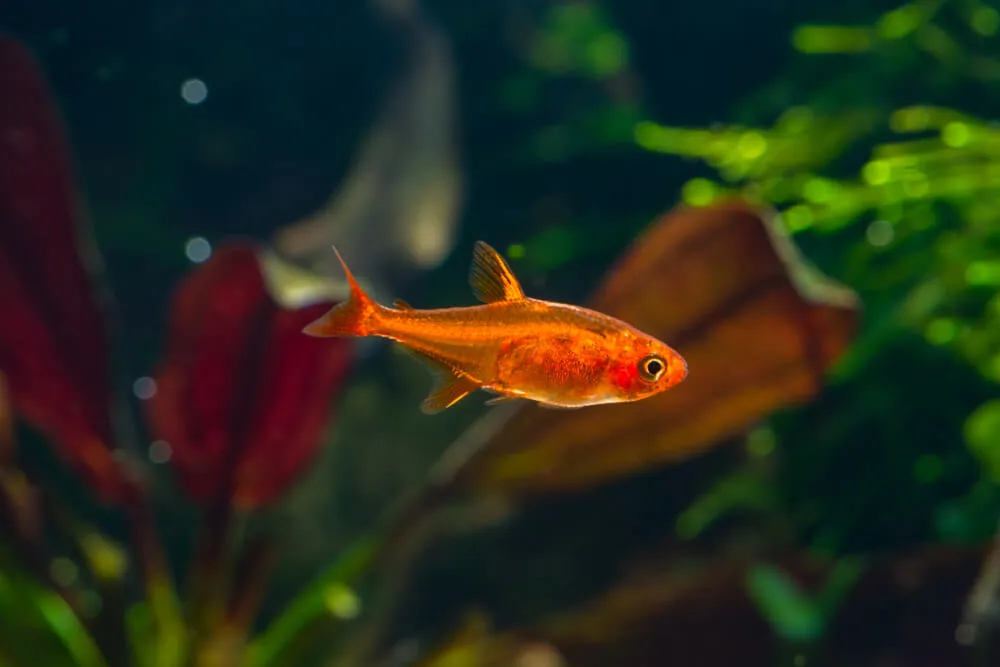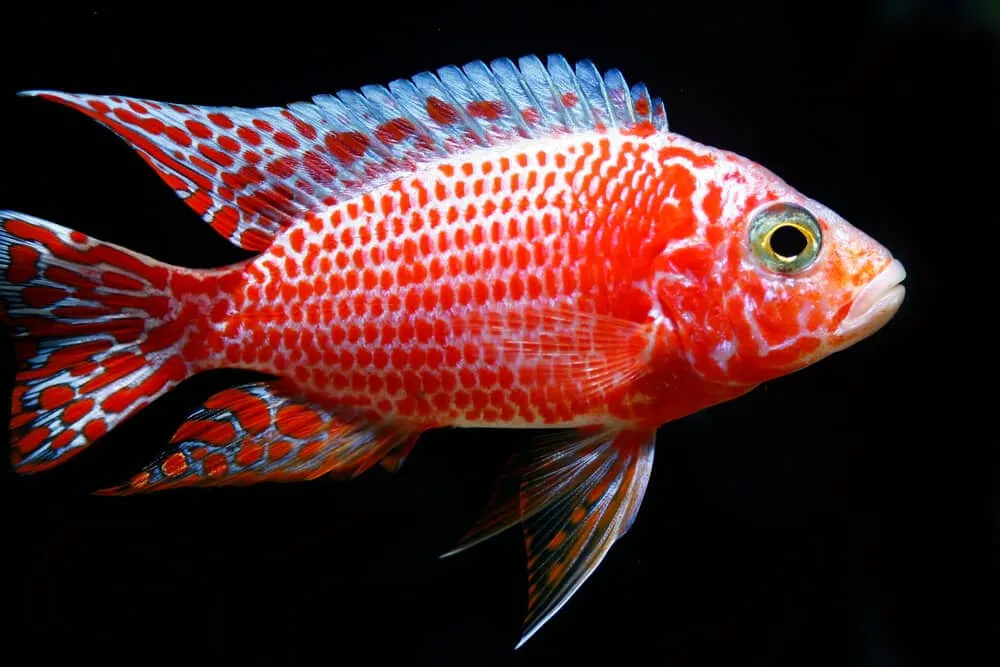Imagine encountering a jaw-droppingly unique fish that captivates you with its distinctive appearance and fascinating behavior. Well, look no further than the Bucktooth Tetra! With its charming bucktoothed smile and compact size, this vibrant and playful fish is sure to make a delightful addition to any aquarium. Whether you are a seasoned fish enthusiast or a beginner hoping to delve into the world of aquatic pets, the Bucktooth Tetra is guaranteed to leave a lasting impression. With its remarkable features and endearing personality, this remarkable creature is truly a sight to behold.
Appearance
Physical features
The Bucktooth Tetra, also known as the Exodon paradoxus, is a small and captivating fish that will surely catch your attention with its unique physical features. They have a streamlined body shape with a slightly humpbacked appearance. The most distinct feature of this species is their impressive pair of sharp, curved teeth that protrude slightly from their lower jaw, giving them their distinctive name. These teeth are used primarily for feeding, as they help them grip and tear apart their prey.
Size
In terms of size, Bucktooth Tetras are relatively small, typically growing to an average length of about 2 to 3 inches (5 to 7.5 centimeters). However, some individuals can grow slightly larger, reaching up to 4 inches (10 centimeters). Despite their compact size, these fish are quite active and have a lot of personality packed into their small bodies.
Coloration
When it comes to their coloration, Bucktooth Tetras are simply breathtaking. They possess a shimmering silver body, which is contrasted beautifully by their striking red fins. The silver coloration is not uniform, as it is interspersed with a series of black markings that run along their lateral line. These markings give them a visually stunning appearance and make them stand out in any aquarium.
Habitat
Natural habitat
The Bucktooth Tetra is native to the freshwater rivers and streams of South America, specifically in the Amazon River basin. They are commonly found in the tropical rainforest regions, where they thrive in warm and well-oxygenated waters. Their natural habitat is often shaded by dense vegetation, creating a tranquil and hidden environment rich in hiding spots.
Distribution
Due to their popularity in the aquarium trade, Bucktooth Tetras have been introduced to various countries outside of their native range. They can now be found in aquariums all around the world, bringing joy to fishkeepers everywhere. It is important to note, however, that the introduced populations do not have a sustainable breeding population in these areas and rely on captive breeding efforts.
Behavior
Schooling behavior
Bucktooth Tetras are a schooling species, meaning they prefer to live in groups rather than being solitary fish. In the wild, they are often seen swimming closely together in large schools, providing safety in numbers. When kept in an aquarium, it is important to replicate this natural behavior by keeping them in groups of at least five individuals. This will not only make them feel more secure but will also bring out their natural behavior and social dynamics.
Feeding behavior
In terms of feeding behavior, Bucktooth Tetras are known to be voracious eaters. They are classified as omnivores, meaning they consume both plant matter and small invertebrates. In the wild, they primarily feed on insects, worms, and plants. In an aquarium environment, they readily accept a variety of prepared and frozen foods, such as flakes, pellets, and live or frozen brine shrimp. It is important to provide a well-balanced diet to ensure their overall health and vitality.
Breeding behavior
When it comes to breeding behavior, Bucktooth Tetras are known to be relatively easy to breed in a well-maintained aquarium. The males and females will engage in an intricate courtship dance, with the male flaring his fins and displaying vibrant colors to attract the female’s attention. Once paired, the female will lay adhesive eggs on the substrate or among plants. The male then fertilizes the eggs and both parents guard them diligently until they hatch. It is important to provide suitable spawning sites and sufficient hiding places for the fry to ensure their survival.
Diet
Natural diet
In their natural habitat, Bucktooth Tetras have a varied diet consisting of small insects, worms, crustaceans, and aquatic plants. They are opportunistic feeders, meaning they will consume whatever food sources are available to them. This versatility allows them to adapt to different environments and find nourishment in various ecosystems.
Aquarium diet
When kept in an aquarium, it is important to replicate their natural diet as closely as possible. They should be fed a combination of high-quality flake or pellet food supplemented with live or frozen foods. Bloodworms, brine shrimp, daphnia, and small insects are excellent options to meet their protein needs. Providing a diverse and nutritious diet will not only ensure their overall health but also enhance their vibrant coloration.
Tank Requirements
Tank size
Due to their relatively small size, Bucktooth Tetras can be comfortably housed in a tank as small as 20 gallons (75 liters). However, to provide them with ample swimming space and accommodate a small schooling group, it is recommended to keep them in a tank of at least 30 gallons (113 liters) or more. A longer tank with a length of 30 inches (76 centimeters) or more is preferable to accommodate their active nature.
Water conditions
Bucktooth Tetras thrive in slightly acidic to neutral water conditions, with a pH range of 5.5 to 7.5 and a temperature range of 74 to 82 degrees Fahrenheit (23 to 28 degrees Celsius). It is important to maintain stable water parameters to ensure their well-being. Regular water changes and a reliable filtration system are crucial to maintain optimal water quality.
Decorations and plants
To create an ideal environment for your Bucktooth Tetras, it is recommended to include a variety of decorations and live plants in the aquarium. Dense vegetation, such as Amazon sword plants, Java ferns, and Vallisneria, will provide ample hiding spots and mimic their natural habitat. Additionally, incorporating driftwood, rocks, and caves will give them extra shelter and territories to explore. It is important to strike a balance between open swimming areas and densely planted areas to fulfill their natural instincts.
Compatibility
Suitable tankmates
Bucktooth Tetras are generally peaceful fish that can be kept with a variety of community fish species. They get along well with other peaceful tetras, rasboras, and livebearers. Avoid housing them with aggressive or territorial fish, as their peaceful nature may make them easy targets for bullying. Choosing tankmates with similar water parameter requirements and size will help ensure a harmonious coexistence in the aquarium.
Incompatibilities
While Bucktooth Tetras are generally compatible with a wide range of fish species, it is important to avoid pairing them with fish that are small enough to fit into their mouths. Due to their predatory nature, they may view smaller fish as potential prey. It is also advisable to avoid keeping them with long-finned or slow-moving species, as their curious nature may lead to fin nipping.
Healthcare
Common diseases
Like any other fish, Bucktooth Tetras are susceptible to certain diseases. The most common ailments include fungal and bacterial infections, parasitic infestations, and fin rot. These diseases can be caused by poor water quality, stress, or the introduction of infected fish or plants. Regular observation and monitoring of their behavior, appetite, and physical appearance will help detect any signs of illness early on.
Preventive measures
To prevent diseases in your Bucktooth Tetras, it is crucial to provide optimal tank conditions and maintain high water quality. Regular water changes, proper filtration, and adequate nutrition will help boost their immune system and minimize the risk of infections. Quarantining new fish and plants before introducing them to the main tank is also essential to prevent the spread of potential diseases.
Treatment options
If your Bucktooth Tetras do fall ill, it is important to seek proper treatment promptly. Depending on the specific ailment, treatments may include medicated baths, the use of antibiotics or anti-parasitic medications, and adjusting water parameters. Consultation with a knowledgeable veterinarian or experienced fishkeeper is recommended to ensure the most effective treatment option.
Breeding
Breeding setup
Creating a suitable breeding setup is essential to encourage the breeding behavior of Bucktooth Tetras. Include a separate breeding tank with a mesh or mesh-covered egg trap to protect the eggs from being eaten by the adults. In this tank, provide appropriate plants and spawning sites, such as java moss or small-leafed plants, and a soft substrate, such as sand, for egg attachment. Maintaining stable water parameters, slightly acidic to neutral, with a temperature around 77 to 82 degrees Fahrenheit (25 to 28 degrees Celsius), will simulate their natural breeding conditions.
Egg care
Once a successful courtship and spawning have taken place, it is crucial to carefully transfer the eggs to the breeding tank using the egg trap. The eggs are adhesive and will stick to the plants or spawning sites. The adult fish should then be removed to prevent them from consuming the eggs. It is important to ensure optimal water conditions and gentle water flow in the breeding tank to promote proper egg development.
Fry care
After approximately 48 to 72 hours, the eggs will hatch, and the fry will emerge. At this stage, it is crucial to ensure a steady supply of nutritious food for the fry. Infusoria, small live foods, and commercial fry foods are suitable options to meet their initial nutritional needs. As they grow, gradually introduce larger foods, such as micro worms or crushed flakes. Providing a well-planted tank with gentle water flow will mimic their natural environment and provide hiding places for the fry as they develop.
Importance in Aquarium Trade
Demand
The Bucktooth Tetra holds a significant place in the aquarium trade due to its unique appearance and fascinating behavior. Their sharp teeth and striking coloration make them a prized addition to many aquarists’ collections. They are often sought after by enthusiasts looking for a visually captivating and active fish species to add diversity to their aquarium.
Availability
Fortunately, Bucktooth Tetras are readily available in the aquarium trade due to their popularity. They can be found in reputable fish stores and are often bred in captivity, ensuring a sustainable supply for interested hobbyists. However, it is important to support responsible sourcing and choose specimens from established breeders or responsible wild-caught sources to avoid contributing to the depletion of wild populations.
Conservation concerns
Although Bucktooth Tetras are not currently listed as endangered or threatened, it is essential to remain mindful of their conservation status. Sustainable aquarium trade practices, responsible breeding programs, and habitat preservation efforts all contribute to the long-term conservation of this species and many others. As responsible aquarists, we can play a vital role in ensuring the viability and preservation of these fascinating creatures.
Interesting Facts
Adaptations
The Bucktooth Tetra’s prominent teeth are a remarkable adaptation that helps them secure their prey. These teeth are elongated and curved, enabling them to grasp and immobilize prey items effectively. This adaptation also gives them a somewhat comical appearance, making them a favorite among many aquarium enthusiasts.
Predators
In their natural habitat, Bucktooth Tetras face various predators, including larger fish species and aquatic birds. Their schooling behavior provides safety in numbers and helps to confuse potential predators. Additionally, their silver coloration with black lateral markings acts as camouflage, allowing them to blend in with the surrounding vegetation and avoid detection.
Other interesting behaviors
Aside from their striking appearance, Bucktooth Tetras exhibit several captivating behaviors. They are known to engage in “flashing,” a behavior where they quickly swim in a zigzag pattern, flashing their sides to display their radiant colors. This behavior is believed to be a form of communication or territorial display. Additionally, they are agile jumpers, so be sure to provide a secure aquarium lid to prevent any escape attempts.
Summary
The Bucktooth Tetra is a unique and fascinating fish species that offers both visual appeal and engaging behavior. With their sharp teeth, striking coloration, and interesting adaptations, they make a captivating addition to any aquarium. By providing them with suitable tank conditions, proper nutrition, and compatible tankmates, you can ensure their well-being and enjoy their enchanting presence in your aquatic sanctuary.






